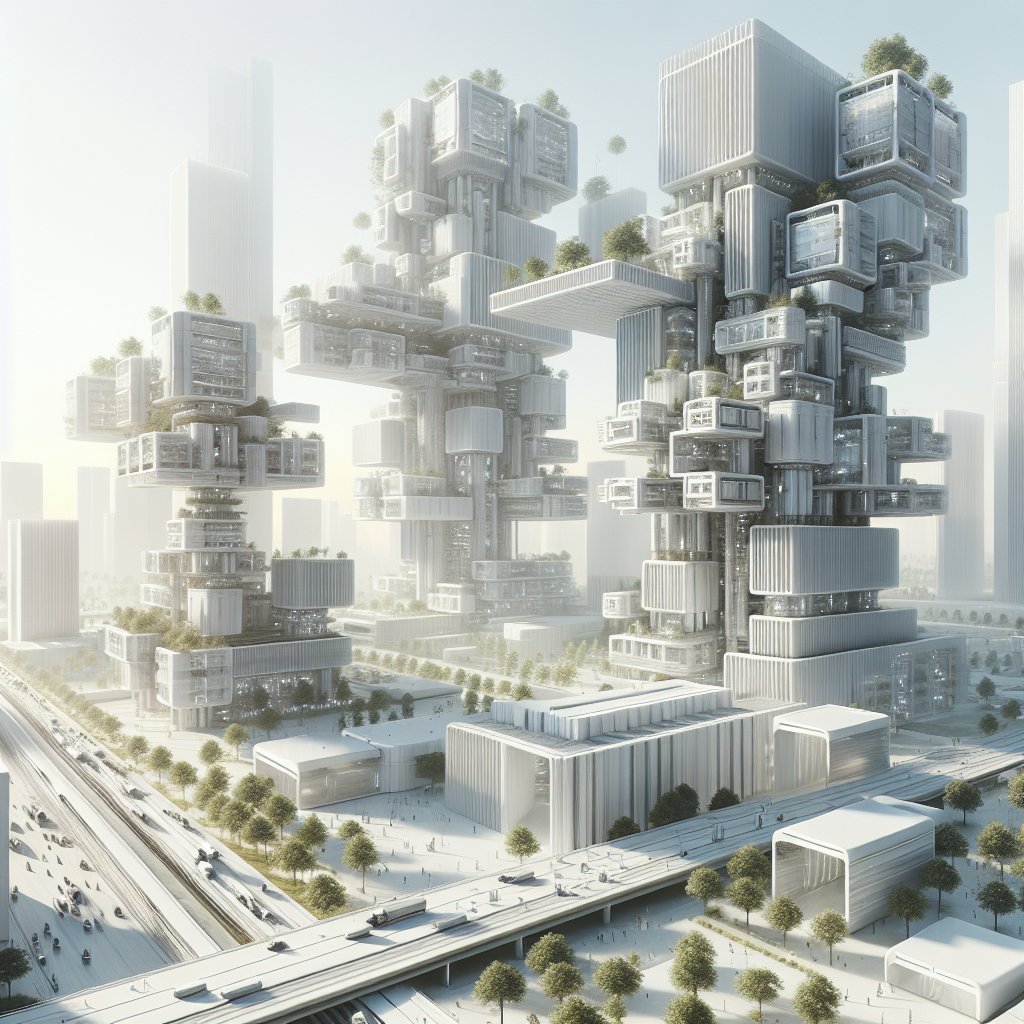As the world grapples with the challenges of climate change and resource depletion, the field of architecture is undergoing a transformative shift towards sustainability. This article delves into the innovative materials that are shaping the future of sustainable architecture, offering a glimpse into how these advancements are redefining the built environment.
The Rise of Biodegradable Materials
One of the most promising trends in sustainable architecture is the development and use of biodegradable materials. These materials are designed to break down naturally over time, reducing the environmental impact of construction and demolition. Traditional building materials, such as concrete and steel, are known for their durability but also for their significant carbon footprint. In contrast, biodegradable materials offer a more eco-friendly alternative.
Among the most notable biodegradable materials is mycelium, a type of fungus that can be grown into various shapes and forms. Mycelium-based products are lightweight, strong, and can be used for insulation, packaging, and even as a structural component. The cultivation process of mycelium is energy-efficient and results in minimal waste, making it an attractive option for sustainable construction.
Another innovative biodegradable material is bioplastics, which are derived from renewable sources such as corn starch, sugarcane, and vegetable fats. Unlike conventional plastics, bioplastics decompose naturally, reducing the burden on landfills and oceans. In architecture, bioplastics can be used for a variety of applications, including window frames, flooring, and interior finishes.
Harnessing the Power of Recycled Materials
Recycling has long been a cornerstone of sustainable practices, and its application in architecture is no exception. The use of recycled materials not only conserves resources but also reduces the energy required for manufacturing new products. This approach is gaining traction as architects and builders seek to minimize the environmental impact of their projects.
One of the most common recycled materials in architecture is reclaimed wood. Salvaged from old buildings, barns, and even shipping pallets, reclaimed wood offers a unique aesthetic while preserving natural resources. Its use in flooring, paneling, and furniture adds character and warmth to spaces, all while promoting sustainability.
Recycled metal is another material making waves in the architectural world. Steel and aluminum, in particular, are highly recyclable and can be repurposed without losing their structural integrity. These metals are often used in the construction of building frames, roofing, and facades, providing strength and durability with a reduced environmental footprint.
Glass, too, is being recycled and repurposed in innovative ways. Recycled glass can be transformed into tiles, countertops, and even insulation, offering a sustainable alternative to traditional materials. The use of recycled glass not only diverts waste from landfills but also reduces the energy consumption associated with producing new glass products.
Innovations in Smart Materials
Smart materials are at the forefront of futuristic architecture, offering dynamic solutions that respond to environmental changes. These materials have the ability to adapt to varying conditions, enhancing the energy efficiency and functionality of buildings.
One such smart material is electrochromic glass, which can change its opacity in response to electrical signals. This technology allows for the control of light and heat entering a building, reducing the need for artificial lighting and air conditioning. Electrochromic glass is particularly beneficial in climates with extreme temperature variations, as it helps maintain a comfortable indoor environment while conserving energy.
Phase change materials (PCMs) are another exciting development in the realm of smart materials. PCMs absorb and release thermal energy as they transition between solid and liquid states. When integrated into building materials, such as walls and ceilings, PCMs can regulate indoor temperatures by storing excess heat during the day and releasing it at night. This passive temperature control reduces the reliance on heating and cooling systems, leading to significant energy savings.
The Role of Nanotechnology in Sustainable Architecture
Nanotechnology is revolutionizing the field of sustainable architecture by enabling the development of materials with enhanced properties. By manipulating materials at the molecular level, scientists and engineers are creating products that are stronger, lighter, and more efficient than their traditional counterparts.
One of the most promising applications of nanotechnology is in the development of self-cleaning surfaces. These surfaces are coated with nanoparticles that repel dirt and water, reducing the need for chemical cleaning agents. In architecture, self-cleaning glass and facades can maintain their appearance and functionality with minimal maintenance, contributing to the sustainability of the building.
Nanotechnology is also being used to improve the thermal insulation properties of building materials. Aerogels, for example, are highly porous materials with excellent insulating capabilities. By incorporating nanoparticles into aerogels, researchers have created ultra-lightweight insulation that can significantly reduce energy consumption in buildings.
Conclusion: The Future of Sustainable Architecture
The exploration of sustainable architecture materials is a testament to the innovative spirit driving the industry towards a more eco-friendly future. As architects and builders continue to embrace these advancements, the potential for creating buildings that are not only functional but also harmonious with the environment becomes increasingly attainable.
From biodegradable and recycled materials to smart and nanotechnology-enhanced products, the possibilities for sustainable architecture are vast and varied. By prioritizing sustainability in design and construction, the architectural community is paving the way for a future where the built environment coexists with the natural world, ensuring a healthier planet for generations to come.










